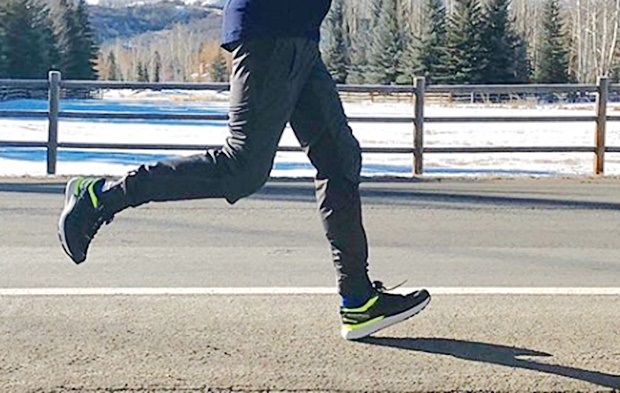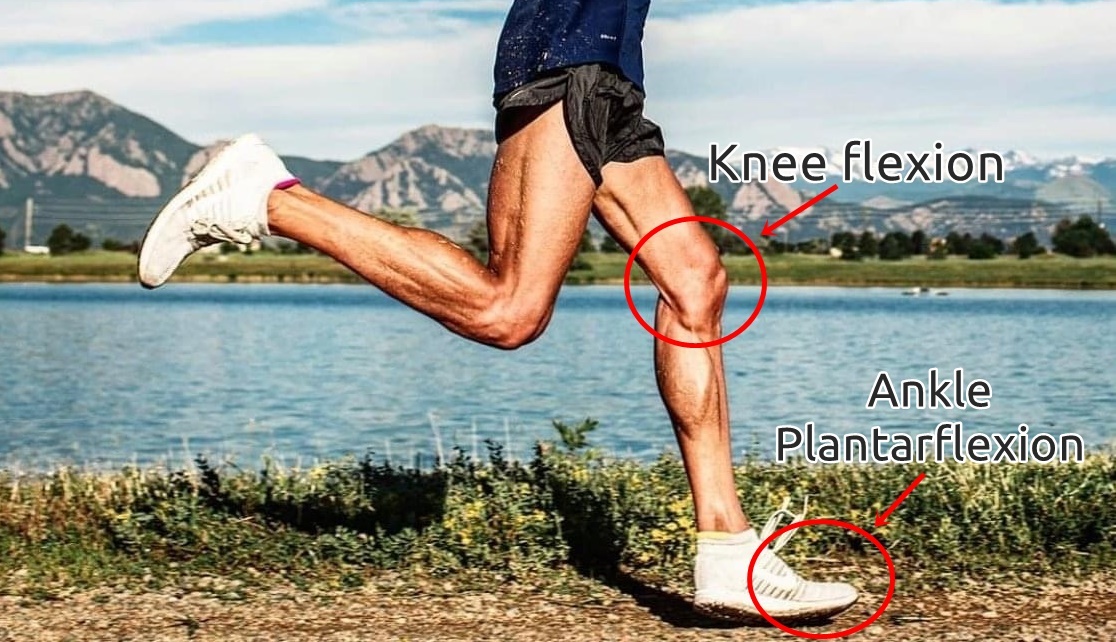All too often do running and knee pain go hand-in-hand, but there’s converging evidence from multiple lines of research supporting that foot strike pattern during running directly influences patellofemoral joint (where your kneecap and femur meet at the front of your knee) reaction force and stress and that once you switch from heel strike to forefoot strike running your knees instantly endure significantly less stress and strain, especially at faster running speeds.


Related-research has pointed to increases in patellofemoral joint reaction force and patellofemoral joint stress as being one of the leading causes of runner’s knee whereby heel strike running is most strongly associated with large increases in compressive forces and mechanical loading on the knee and these increases correlate with more patellofemoral joint force and pain.
Comparatively, forefoot running has been repeatedly found to correlate the best with significant reductions in patellofemoral joint reaction force and stress, suggesting that a big change in knee-joint stress during running occurs at the foot strike level.
To further validate this, a 2015 study in the Scandanvian Journal of Medicine and Science in Sports found that runners who utilized a forefoot strike showed a 10% – 13% reduction in patellofemoral joint kinetics per step and a 12% – 13% reduction in patellofemoral joint kinetics per kilometre. Even more encouraging, previous studies have also reported that patellofemoral joint stress and pain decreased by 15% when heel strike runners switched to forefoot running. Clearly, forefoot running is less distressing on the knees – but why?
Research indicates that landing with a forefoot strike during running instantly mobilizes greater ankle plantarflexion and knee flexion upon and at touchdown (as shown above) which taken together has a large effect on reducing the patellofemoral kinetics that causes patellofemoral pain. The combined effects of these mechanical outputs also helps bring down the collision force and allows the body to glide more smoothly with the ground by reducing the distance between initial foot strike position and the center of mass (upper body). By and large, these are the mechanical chain of events in forefoot running that accounts for reducing runners knee proneness as compared with heel strike running (here’s my video on how heel strike running causes runners knee).
Although the cause of runner’s knee is an intricate web of many factors, it makes sense to focus on adopting a forefoot strike during running because it helps you assemble more functional mechanics (i.e. increases in knee flexion and ankle plantarflexion) that gives you real protection against knee-joint stress and impact overexposure whereas landing heel-first when running prevents knee flexion and ankle plantarflexion from being used more effectively of which the vulnerability of the knee stems from.
Last but not least, forefoot running is not only more protective on the knees than heel strike running, its also more economical, too! Read my full article on that here!
References:
Arendse et al. Reduced eccentric loading of the knee with pose running method. Med Sci Sport Excer, 2004, 2, 272-77.
Wilson et al. Influence of step length and landing pattern on patellofemoral joint kinetics during running. Scand J Med Sci Sports, 2015. Doi:10.1111.
If you’d like, you can support Run Forefoot by shopping for minimalist footwear from the following places:
Be Lenka: https://www.dpbolvw.net/click-7600968-14330828
Wilding Shoes: https://bit.ly/3lIygQP
Xero Shoes: http://bit.ly/2UIR9YK
Zappos: https://bit.ly/3agv5NG
Vivobarefoot: https://amzn.to/3wPRKIk
You can also show support and help keep Run Forefoot going by making a donation in any amount of your choosing: https://www.paypal.me/RunForefoot
Bretta Riches
BSc Neurobiology; MSc Biomechanics candidate, ultra minimalist runner & founder of RunForefoot. I was a heel striker, always injured. I was inspired by the great Tirunesh Dibaba to try forefoot running. Now, I'm injury free. This is why I launched Run Forefoot, to advocate the health & performance benefits of forefoot running and to raise awareness on the dangers of heel striking, because the world needs to know.
Latest posts by Bretta Riches (see all)
- Can You Run In Barefoot Shoes? Yes, But DON’T Heel Strike! - 21/07/2024
- Why Cushioned Running Shoes Are Really Bad for Your Feet - 19/07/2024
- Do Cushioned Running Shoes Cause Injuries? - 17/07/2024

